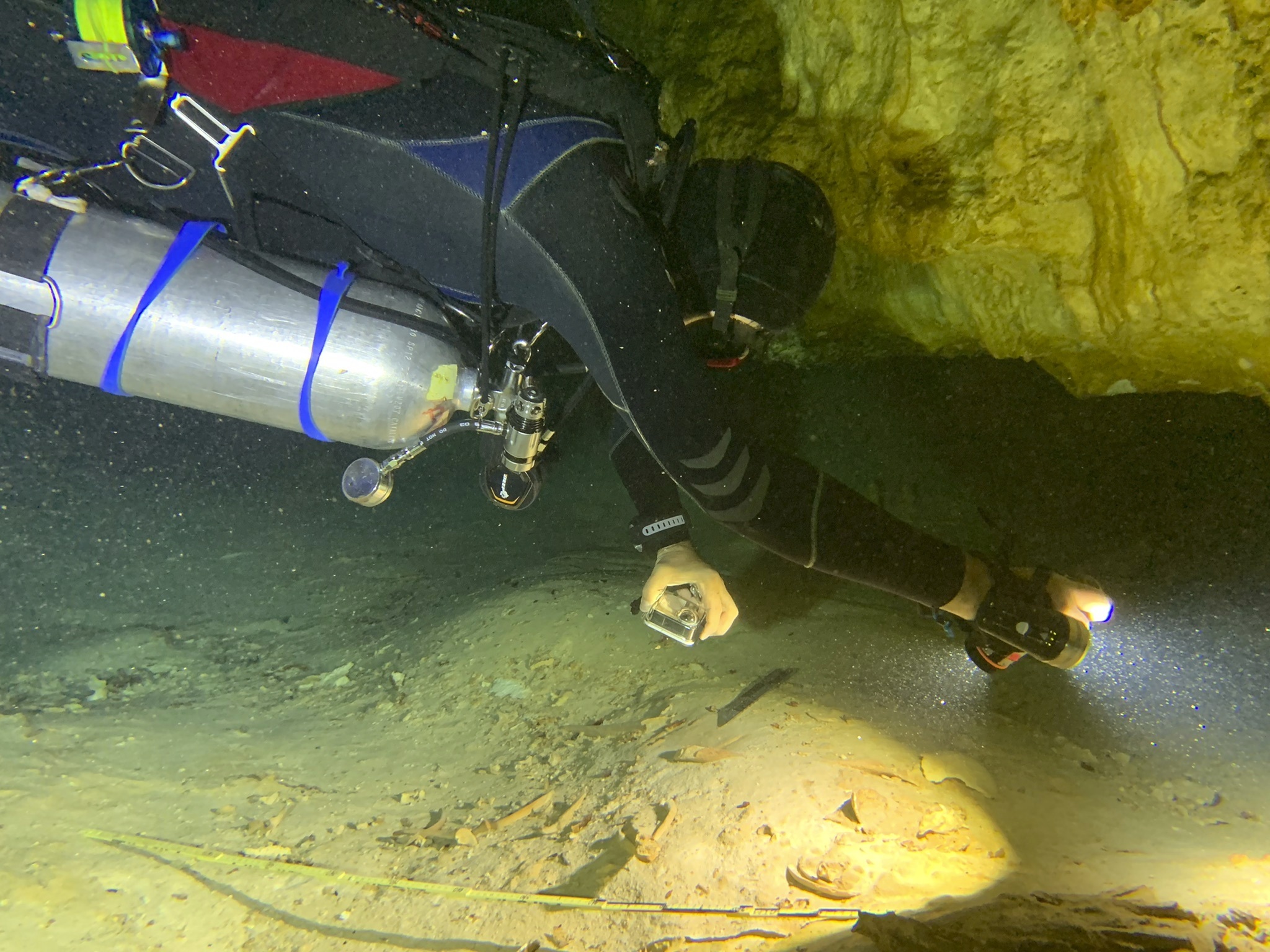A prehistoric human skeleton was discovered in an underwater cave in Mexico that was flooded at the end of the last Ice Age, an archaeologist said Tuesday.
Octavio Del Rio, a cave-diving archaeologist, discovered the skeleton with fellow diver Peter Broger approximately 26 feet underwater and a third of a mile into a cave system on Mexico’s Caribbean Coast. The shattered skull was hidden under rocks.
OUR STORIES WILL BE LOST: 9/11 SURVIVORS HEARTBROKEN BY CLOSING OF NYC TRIBUTE MUSEUM
Because the bones could not have been placed there without modern equipment, Del Rio deduced that the skeleton must date back at least 8,000 years, to when rising sea levels flooded the caves.
“There it is. We don’t know if the body was deposited there or if that was where this person died,” Del Rio told the Associated Press. “There is a lot more study that has to be done in order to correctly interpret [the find].”
Photographic studies and dating will need to be performed in order to determine precisely how old the skeleton is, Del Rio added.

Although the exact location of the discovery was not released, Del Rio said it was near a portion of the Mexican jungle where the government plans to build a high-speed tourist train. The train project has received negative responses from environmentalists, archaeologists, and cave divers who claim the project threatens the caves along the Caribbean coast.
The roof of one of the caves, which is located a few miles from the proposed track, would collapse under the repeated strain of a train, Del Rio said.
The project is currently expected to pass through a Mayan village, which houses 300 inhabitants.
CLICK HERE TO READ MORE FROM THE WASHINGTON EXAMINER
The purpose of the project, dubbed the “Mayan Train,” is to take advantage of tourism that the country receives in Cancun and offer an easy way for tourists to see the ancient Mayan cities in Yucatan, Campeche, Chiapas, Tabasco, Mexican President Andres Manuel Lopez Obrador said last month.

